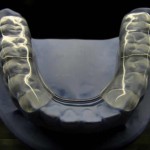
Temporomandibular disorders can be classified into 3 main categories, myogenous, arthrogenous and mixed. A number of treatments for temporomandibular disorders have been studied including occlusal splints, counselling therapy, physiotherapy, oral or injectable pharmacotherapy, and arthrocentesis or arthroscopy. A number of studies and reviews have reported on the effectiveness of these treatments but the number comparing different types of occlusal splint is limited.
The aim of this review was to assess the effectiveness of various types of occlusal splint in the management of temporomandibular disorders (TMDs) and to rank them according to their effectiveness
Methods
Searches were conducted in the PubMed, Embase and Cochrane Central databases for randomised controlled trialcomparing any occlusal splint to other treatments for patients with temporomandibular joint disorders (TMD). Two reviewers extracted data and assessed risk of bias using a modified version of the Cochrane risk of bias tool with disputes being settled by a third reviewer. The main outcome was pain (self-reported of clinically assessed) secondary outcomes were masticatory muscle tenderness and maximum mouth opening. Continuous outcomes were reported as standardised mean difference (SMD) and dichotomous data as risk ratios (RR). A network meta-analysis (NMA) was conducted and GRADE (Grading of Recommendations Assessment, Development and Evaluations) used to assess certainty of the evidence.
Results
- 48 RCTs were included.
- 13 were considered to be at low risk of bias, 25 at unclear risk and 10 at high risk.
- 16 RCTs (744 patients) assessed pain improvement for 9 treatments for mainly TMD of arthrogenous origin using dichotomous data.
- Pain improvement was also assessed dichotomously in 19 RCTs (946 patients) assessing 8 different treatments for TMDs of mainly myogenous origin.
- Continuous data was used for evaluating post-treatment pain intensity in 16 RCTs (929 patients) in 8 different treatments for TMDs of mainly arthrogenous origin and 18 RCTs (1129 patients) received 7 different treatments for TMDs of mainly myogenous origin.
- a significant decrease in post-treatment pain intensity was found following full hard stabilisation splint, anterior repositioning splint, counselling therapy plus hard stabilization splint, and NTI-tss when compared to control in patients with arthrogenous TMDs.
- There was a significant decrease in post- treatment pain intensity after hard and soft stabilization splints, NTI-tss, and counselling therapy with/without a hard stabilisation splint when compared to control in patients with myogenous TMDs.
- A significant lowering of the incidence of TMJ clicking was seen with anterior repositioning splints and counselling therapy compared to a full hard stabilization splint and control.
- The most effective treatment to reduce pain in patients with
- mainly arthrogenous TMDs was anterior repositioning splint, followed by counselling therapy and self-management with hard stabilisation splint.
- mainly myogenous TMDs was NTI-tss, followed by hard stabilization splint and counselling therapy plus hard stabilisation splint.
- Anterior midline stop devices, followed by counselling therapy and hard stabilisation splint alone were the most effective treatments to improve mouth opening in patients with TMDs affecting the TMJ and masticatory muscles.
Conclusions
The authors concluded: –
the results derived from this NMA of 48 RCTs lead to the rejection of the hypothesis that various occlusal splints, either alone or in combination with counselling therapy, yield similar outcomes in the management of TMDs. On the other hand, this NMA verifies the hypothesis that the hard stabilization splint achieves superior results in patients with myogenous TMDs in comparison to those with arthrogenous TMDs. This study also confirms a substantial association between the effectiveness of hard stabilization splints and the wearing time per day and the overall duration of follow-up; hence, the hypothesis of no association is rejected.
Comments
The authors were aiming to address three questions with this review
- Does occlusal splint therapy treat TMDs?
- What is the most effective oral occlusal splint for reducing pain intensity and TMJ clicking, and improving mouth opening for patients with arthrogenous and myogenous TMDs
- Does the pattern of hard stabilization splint wearing time have an impact on its efficacy in the treatment of TMDs?
The authors searched 3 major databases although their protocol indicates that they were also going to search the CINHAL and Scopus databases. The authors highlight that while most of the studies used the Research Diagnostic Criteria for Temporomandibular Disorders (RDC/TMD) as a diagnostic tool 10 of the included studies did not. The authors also chose to exclude the masking of patients and investigators domain from the Cochrane risk of bias tool because patients would be aware of which appliance they were wearing. If the clinical outcome assessments in the studies were performed by a clinician not directly involved in the clinical care of the patients and masked to the intervention it would have been possible to reduce bias. The included studies had a wide range of follow up times ranging from 4 weeks to 12 months, many involved small sample sizes and 22/48 (46%) did not provide information on dropouts. In addition, there were only a small number of RCTs investigating soft stabilization splints and prefabricated splints. Consequently, the findings from this network meta-analysis should be interpreted cautiously.
Links
Primary Paper
Al-Moraissi EA, Farea R, Qasem KA, Al-Wadeai MS, Al-Sabahi ME, Al-Iryani GM. Effectiveness of occlusal splint therapy in the management of temporomandibular disorders: network meta-analysis of randomized controlled trials [published online ahead of print, 2020 Jan 22]. Int J Oral Maxillofac Surg. 2020;S0901-5027(20)30004-7. doi:10.1016/j.ijom.2020.01.004
